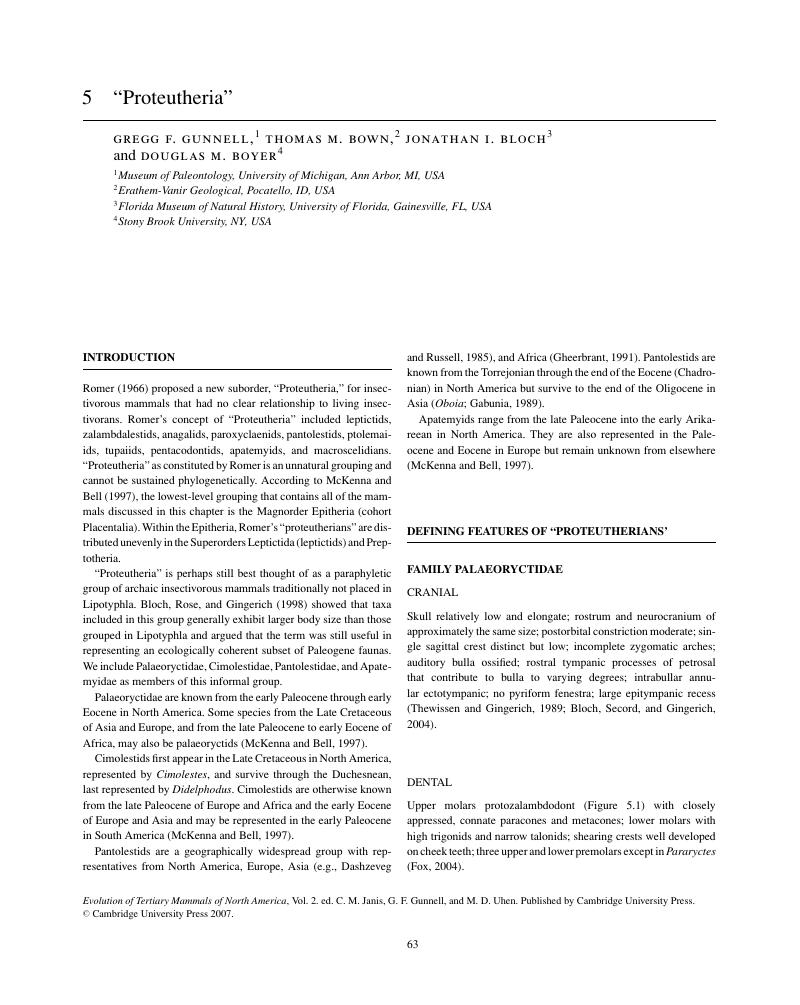5 - “Proteutheria”
from Part II - Insectivorous mammals
Published online by Cambridge University Press: 07 September 2010
Summary

- Type
- Chapter
- Information
- Evolution of Tertiary Mammals of North America , pp. 63 - 81Publisher: Cambridge University PressPrint publication year: 2008
References
- 9
- Cited by



